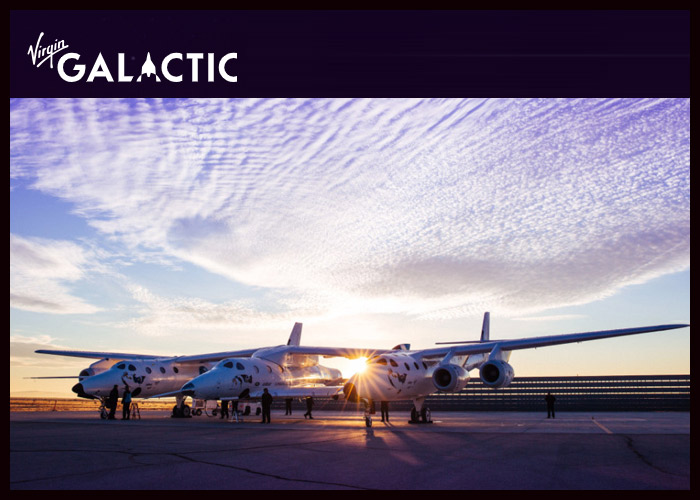In a momentous achievement two decades in the making, Virgin Galactic, the space venture founded by British billionaire Richard Branson, successfully completed its first commercial flight carrying paying customers to the edge of space. Unlike its competitor, Jeff Bezos’s Blue Origin, the inaugural flight focused on research and included Italian Air Force-funded passengers. However, future flights are expected to cater to a range of high-profile customers.
The mission featured two Italian Air Force personnel, Col. Walter Villadei and Lt. Col. Angelo Landolfi, alongside Pantaleone Carlucci from Italy’s National Research Council and Colin Bennett, a Virgin Galactic astronaut instructor. Bennett’s role was to assess the comfort and functionality of the flight, providing valuable feedback for potential improvements to Virgin Galactic’s rocket-powered space plane, VSS Unity.
The journey unfolded in several stages, beginning at Virgin Galactic’s spaceport in New Mexico. Passengers boarded VSS Unity, attached beneath the wing of the twin-fuselage mothership VMS Eve, which took off like an airplane. After reaching an altitude of over 40,000 feet, VMS Eve released VSS Unity, which ignited its rocket engine and ascended directly upward at supersonic speeds. Reaching an altitude of more than 50 miles, VSS Unity entered a brief period of weightlessness before gliding back to the spaceport for a runway landing. The entire flight lasted approximately an hour and a half.
The significance of the flight lies in the moments of zero gravity experienced by VSS Unity, which hold great research potential. The weightless environment allows for a better understanding of how various materials and scientific experiments function in space. Conducting research on suborbital missions, such as those offered by Virgin Galactic and Blue Origin, proves cost-effective compared to launching experiments to the International Space Station.
For this particular mission, the Italian Air Force and National Research Council selected 13 experiments, including research on heart rate behavior during acceleration, cosmic radiation measurement in the upper atmosphere, and the study of biofuel behavior under different pressures in microgravity.
Virgin Galactic’s successful launch marks a significant milestone for the company, which has spent the past two decades developing an upgraded version of its space plane for commercial service. Despite facing financial challenges and burning through funds, Virgin Galactic has sold around 800 tickets, with prices ranging up to $250,000 per ticket.
The launch occurs amid increased attention on high-stakes tours undertaken by wealthy adventurers following the tragic loss of an OceanGate Expeditions submersible. Safety remains a priority for both Virgin Galactic and Blue Origin, as they emphasize the importance of minimizing risks. However, space tourism, like deep-sea exploration, inherently carries certain dangers.
In 2014, Virgin Galactic experienced a fatal accident when its space plane disintegrated during flight. Similarly, a Blue Origin rocket exploded during ascent in 2022. Although these incidents highlight the risks involved, the commercial space industry in the United States remains largely self-regulated, with Congress placing a moratorium on new regulations for private human spaceflight.
While the Federal Aviation Administration licenses commercial rocket launches, its current role focuses primarily on ensuring the safety of bystanders and nearby property rather than protecting passengers on board. Customers embarking on space travel must sign “informed consent” documents acknowledging the risks involved.
Source: Read Full Article
